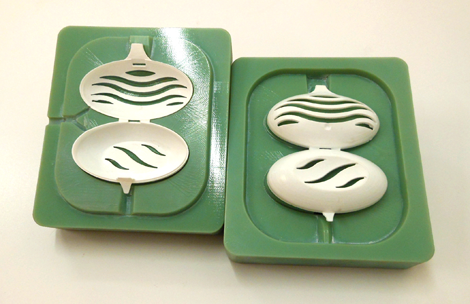
Unilever is using 3D printed moulds to produce parts in the final materials to be used in testing
Consumer product giant Unilever, is using 3D printing to produce injection moulding tools, making it able to produce prototype parts in the final material for functional and consumer tests.
The company uses a Stratasys Objet500 Connex to produce injection mould tools for its household care and laundry goods divisions, with a run of around 50 units for a wide variety of prototype parts such as bottle caps and closures.
This method means that the Unilever design team can design and mould multiple parts and have them tested in the same day.
“Stratasys 3D printing technology, we can design and print a variety of injection moulds for different parts that can undergo functional and consumer testing, all on the same day,” explains Stefano Cademartiri, R&D, CAD and Prototyping Specialist at Unilever.
“Before, we would have to wait several weeks to receive prototype parts using our traditional tooling process,” says Stefano Cademartiri, R&D, CAD and prototyping specialist at Unilever.
“Not only would this lengthen lead times, it would also increase costs if iterations were required. With 3D printing we’re now able to apply design iterations to the mould within a matter of hours, enabling us to produce prototype parts in final materials such as polypropylene, 40 per cent faster than before.”
The company uses similar methods for thermoforming mould concepts, using its FDM-based Fortus 360mc machine.
Its ABS-M30 ‘production-grade’ plastic enables the company to produce realistic moulds with flexible strength that can also endure functional testing.
“Having previously outsourced our thermoforming requirements, we found that we were accumulating significant labor costs and having to contend with lengthy lead times,” concludes Cademartiri. “However, since 3D printing these parts ourselves, we’ve reduced lead times in the conceptual phase by approximately 35 per cent.
“The technology has enhanced our overall manufacturing process, allowing us to evaluate our designs quickly and eliminate those that are not suitable, before committing significant investment towards mass production.”






